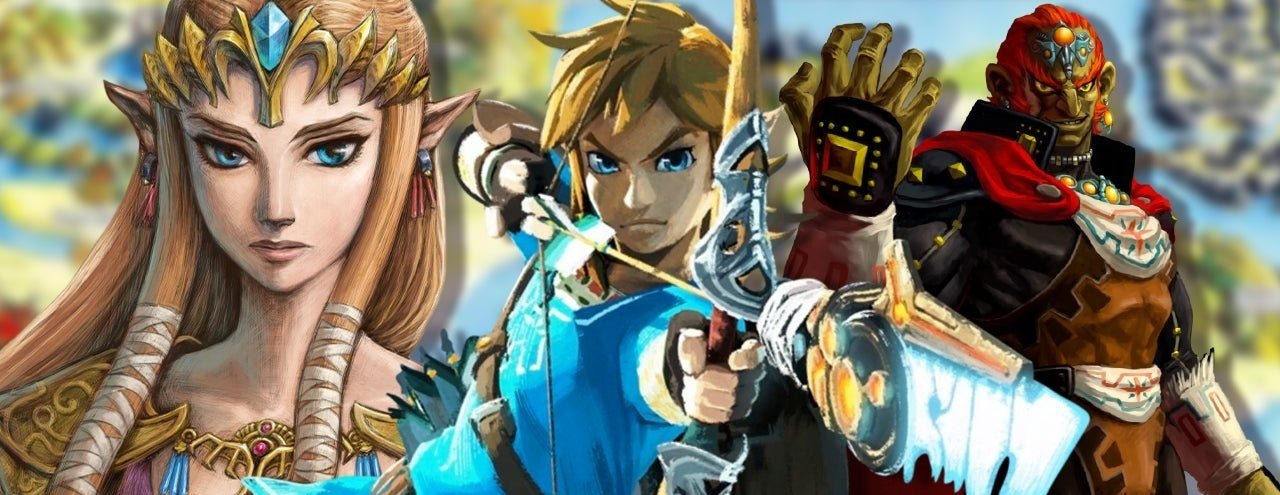
What are ouR Design PrinicpaLS?
Whenever adapating ANy Sort of IP, espscially somethign as BIG as the ‘The LeGend of Zelda’ (TLOZ) you need to be able to Boil it down to some design principals, PrinciPaLs That Will guide your decision. FOr the ttrpg ‘Courage Wisdom Power’ (CWP) our Principles are as Follows:
The game is expressly heroic. You may to choose to run a game where you players play the villains, but from a design perspective, we will assume you are playing heroes.
The players are the center of the story. In our game, there is no current day Link or Zelda or Ganondorf, at least they have yet to reveal themselves. Those three souls that reincarnated into every generation that needs the,. Through the course of play, the players may come to discover, that they are, inpart or in full, the reincarnated heroes of legend.
History in Hyrule does not repeat, but it rhymes. Every version of Hyrule, across all the games, is different. There are many common elements, and they may look the same at a glance, but they are indeed different. The Hyrule of ‘Power - Wisdom - Courage’ (PWC) will be no different.
Within the world of PWC, all the previous games have happened, either literally or in myth. Knowledge of the previous games is common knowledge to the people of Hyrule, even if only a cursory level of it. As an an example, you may never of have played Major’s Mask, but you are probably aware it involves the Moon crashing into the world. That is the level of detail most people have. Players should feel free to assume there characters posses the players out of game knowledge of the series, while being aware it may not be enterally accurate.
This alpha is going to assume you are familiar with the world of TLOZ and table top role playing games (ttrpgs) and will not be spending time explaining what these are.
This alpha is built upon three books, “The Legend of Zelda: Hyrule Historica”, “TLoZ: Encycolpedia”, and “TLoZ: Arts & Artifacts”. As a rule, you will not find descriptions in this book, except where absolutely necessary. Be aware, that we the designers are treating those three books as our singular canon source.
When in doubt between emulating the video and doing what makes for the best table top experience, we as a rule are going to lean towards what makes a good table top experience.
TLoZ has never stayed static. Every version of the game, has added something new and taken things away, while still being true to the original game and its spirit.
TLoZ is a game bore out of the imagination and memories of childhood, specially the memories of Shigeru Miyamoto's explorations of the hillsides, forests, lakes, caves and rural villages surrounding his childhood home in Sonobe, Japan. That "childhood lens” will be our guide.
As a rule, our heroes fight explicitly evil monsters and villains, as would be found in a child’s dreams. Our heroes never intentionally hurt or kill hyrulians or other people. Innocent people do get hurt and die, but it is often off screen and never by direct action of the heroes.
TLoZ generally follows the adventures of a lone hero, Link, a young hyrulian male, who is often or aspires to be a knight of Hyrule, and who in addition has a fundamental connection to the Triforce of Courage. He may be aided by others, but it is chiefly Link’s tale. It is here that PWC differs from TLoZ.
PWC is explicitly a group game, where at the start, none of the players know if there character is the chosen one (or chosen few).
The chosen one may be a male, female, trans, a Zora, Shieka, Hyrulian or a member of any other people of Hyrule. The spirit of heroes can be found anywhere and everywhere. As their character’s grow in power, they may discover (through leveling up) that they are indeed the Hero of Courage, or Wisdom or even Power.
Demise is the ultimate villain of the game, even if our heroes never encounter, nor here of them. Hyrule is the stuff of a child’s day dreams and imagination, and Demise is the incarnation of all threats posed to a child's imagination: Demise is the bully, the cruel teacher, and the hardships of adult life, ever encroaching on childhood. Hyrule is an idealistic kingdom, under siege by the evils of the outside world.
Ganondorf is the Hero of Power and is not destined to be evil. In the TLoZ Ganondorf is Demise’s pawn and avatar, but in PWC he is getting a new chance. In your campaign, the spirit of Ganondorf may still be wicked, but it is not guaranteed. Maybe the spirit of the hero of Courage or Wisdom has been captured by Demise. Maybe Demise has entirely different agents and avatars that they send against Hyrule.
Rhyme, but never repeat a story. While it might be tempting, we will try to never re-tell a story already told in one of the video games. Recurring troupes and characters will certainly be used, but we aren’t trying to exactly emulate what has come before.
As this ultimately is bore from a child’s imagination, it is no accident that all the deities of Hyrule are women; they are mother figures. They are warm and distant. Warm enough for the people and the heroes to venerate, but far enough away as to not impede the heroes from being heroes.
Being Champions and Sages will totally be possible, but will be mid and late game achievements.
Like in the video games, gear and resource mamangement will be imporant, but not cumbersome.
We will strive to make the rule set light, accessible and fast moving, while still having crunch, with meaningful build decisions.